
Benedict Ransley
Screenwriter | Film & Entertainment Professional
WRITING PROJECTS

SUCH A NIGHT
Optioned & in development
8/10 The Blacklist
Director: Nigel Cole
Producers: Nick Leese and Ian Lewis
Inspired by real events… 1958. Private Elvis Presley risks everything by going AWOL from his West Germany base and secretly fleeing to vibrant London, where he meets with British rock’n’roll star Tommy Steele for one magical night of music, mischief, and shocking revelations.

CRATCHIT
A new novella and screenplay inspired by Charles Dickens' A Christmas Carol.
Top 10 Finalist: ISA Emerging Screenwriters Competition 2025
Ebenezer Scrooge returns from the grave to haunt ‘Tiny Tim’ Cratchit – that once sweet boy, now twisted by tragedy and estranged from his family. The spectral Scrooge must drag ailing Cratchit through Christmases past, present and future to save him from a fate worse than death, while facing up to the unexpected consequences of his own redemption.
.png)
I WOULD LIKE TO THANK
Optioned & in development
Top 5%: Nicholl Fellowship
Finalist: Roadmap Writers' UK & IRE Initiative 2025
Semi-Finalist: Script Lab
QF: Final Draft Big Break
After a decade wallowing in the direct-to-video wilderness, a humiliated Hollywood star is offered the comeback role of a lifetime in an auteur’s new movie – but only if he can overcome his past and survive a volatile crash course with an irreverent British acting coach.
BACKGROUND

Hello there. I’m Ben, a writer and film and entertainment professional living in London. As a screenwriter, I have multiple projects optioned and in development, including Such A Night, with Nigel Cole (Calendar Girls, Made in Dagenham) set to direct.
Outside of writing, I spent five years working in theatrical distribution, releasing films including Hustlers and Spencer, and most recently held a senior management position at global media company NME Networks.
This summer, I enjoyed a bucket list career break, spending three months travelling around the US, encountering gator-infested swamps, sky-scraping sequoias, and gushing geysers.
In February 2026, I will be taking up a new position in theatrical distribution at a globally renowned content company.
WHAT I DO
As a film & entertainment professional, I have well over a decade of experience in fast-paced, multi-faceted roles. At STX International, I worked for five years in theatrical marketing across titles including Hustlers, Wind River, Countdown and Spencer. Following my time at STX, I joined NME Networks as Head of Marketing, before taking on a broader remit as Director, Content and Media Operations.
My experience lies in steering theatrical releases, brand and product campaigns, and commercial partnerships through their lifecycles – from ideation and strategy to impactful creative and compelling content, while leading media agencies, creative agencies, talent, and global commercial partners to tell stories that engage, entertain, and drive action.
THINGS I'VE DONE

Chappell Roan on The Cover of NME. Credit: Kristen Jan Wong for NME
In my time at NME Networks, I was proud to lead several high-profile projects. One of the most memorable projects I played a role in was reconceptualising and relaunching NME's famed cover proposition. For decades, NME's cover had showcased the coolest, biggest, edgiest names in pop culture – and Chris Moyles. The challenge was to rethink the foundations of the cover proposition for a Gen Z audience. Our insight was that there is still value in the traditional approach, i.e. showcasing the big guns like Rihanna, Dua Lipa, Arctic Monkeys, etc., but the truth is they're on promo cycles with cover features available across several other publications. And while the NME piece on any of these artists was always unique and insightful, was that approach really going to cut through the noise and engage an 18-year-old in Stoke or Seoul or San Antonio in the battle for attention? What would make us a destination for this audience?
What's more, with A-list talent, shoots were usually supplied, meaning no creative input and no long-term business upside from owned imagery. So what did we do?
We decided to be bold and double down on the beating heart of NME – new music discovery. Our ambition was to repurpose the cover as an exclusive platform for championing emerging talent. No A-List, no previous cover stars, no supplied imagery. Fifty artists a year, fifty shoots, and a clear global framework to ensure the artists we featured reflected our global audience. Each cover was to be clean of coverlines, just the NME masthead, a phenomenal shot, and the artist's name as a bespoke headline.
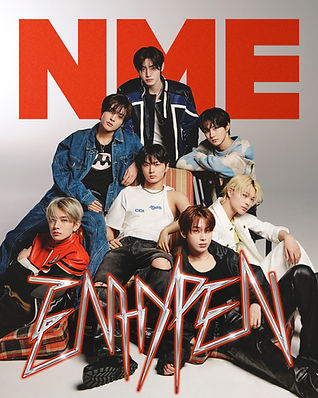
ENHYPEN on The Cover of NME. Credit: Pak Bae for NME
The feeling was that we could create a weekly new music event for our global audience of young music fans, while creating a pivotal milestone in the emerging artist's nascent career – one of many that we as a brand wanted to be a part of. First, it was NME Radar, then The Cover, then our video series In Conversation, then maybe, just maybe, one day they'd be on stage at the NME Awards picking up the gong for Godlike Genius. We knew the numbers would be conservative, but we were excited by the prospect of building an audience of engaged superfans: young music obsessives with a limitless appetite for discovery. Our view was that these smaller audiences offered more long-term value to the brand through future products and experiences versus the bigger, passive audiences that landed on cover features for bigger talent. Before we started to think about monetisation, verticals and branded vapes, we had new workflows to build, 'emerging' criteria to formulate, creative to develop, contracts to write up, and guidelines to create.
We got it done. Every Monday, a new cover shot by NME, with a 1,200+ word feature, would drop – giving an enormous platform to emerging global artists, and their very own moment across NME's channels. It's easy to overlook the human element when there's so much work to do, but can you imagine being 20 years old, unsigned, making music in your bedroom, and the next minute you're on the cover of NME?
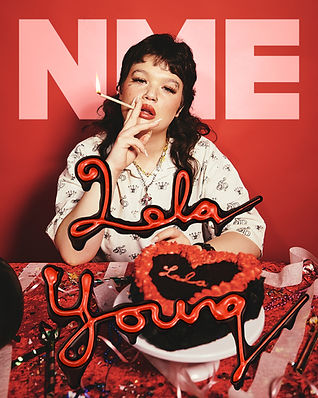
Lola Young on The Cover of NME. Credit: Ashley Osborn for NME.
It was a huge undertaking, and you'd be hard-pressed to find another music media brand shooting artists around the world every single week – but that's what we did, and what NME continues to do. To round out the franchise and juice our time with talent, we contracted supporting content: a BTS video of the shoot, a separate video series called Song Stories (helping us build our own library of multimedia content), and a bespoke, talent-curated themed playlist. We gave it a simple new brand identity, 'The Cover', and created decks to communicate the vision to PRs, outline categories and criteria for talent, and provide branding guidelines for all creative. While it took a little time for the idea to bed in with PRs and the industry at large, the fact that we covered emerging artists like Chappell Roan and Lola Young and Royel Otis before they hit shows that The Cover is on its way to becoming the definitive destination for new music discovery.
Overseeing The Cover each week was a real highlight, as it was the perfect example of global teams – editorial, production and the art desk collaborating to deliver something meaningful. The creative process was particularly rewarding, just me and our Art Director working through initial ideas and mocks, before shortlisting and pulling the trigger on the cover-to-be. We had the idea to commemorate a year of the relaunched cover with a content campaign and parties for talent and industry in both London and Singapore. The Cover Turns One was a great way of taking stock of what we had achieved as a team, and seeing the 50 covers lighting up the tunnel at Outernet, Denmark Street was a real thrill.


Credit: Joe Bishop for NME
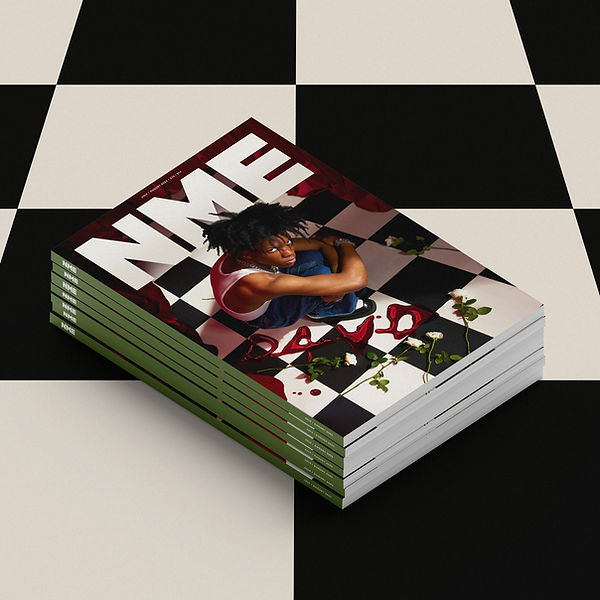
Yes, there were grenades to dodge or jump on – from contract disputes to outlandish requests to creative differences, but problem-solving is what I love the most, and luckily for me, my team was exceptional at thinking laterally and creatively to go around or through a problem. We never missed a week, and I'm sure they never will.
d4vd on The Cover of NME. Credit: Jonathan Weiner for NME
As if that wasn't enough to be getting on with, we brought back NME Magazine in print. A brand bringing back a print product in 2023... the world was healing. NME Magazine continued the core tenets of The Cover, with a focus on emerging talent and the culture you should be engaging with, rather than punching down on what was worth skipping. A real highlight from this period was sitting down with an empty flatplan, and mapping out what NME Magazine might feature in 2023. We created new franchises, including Secret Sauce (an interview with an industry high achiever), In The Mix (NME at entertainment events the world over), Behind The Cover (how the creative came together) and Playlist (we made one so you don't have to). The design process was comprehensive, working closely with the Art Director in a truncated timeframe, we settled on layouts and fonts and logos and pagination (and the list goes on) in record time.
We treated the magazine's release like a sneaker drop... hiding the identity of the cover artist until the second it went on sale, a limited run that created scarcity and urgency, built first-party data, and created a bi-monthly moment with a video-led marketing campaign supported by artists across their channels. Variety covered the relaunch, and I remember someone from a broadsheet emailing essentially asking for 'proof' that the magazine existed, and wasn't just a publicity stunt. Must have been a slow news day.
To maximise cross-group collaboration, we decided to sell the magazine online, exclusively via NME's sister brand, Denmark Street-based guitar store Dawsons. Another learning curve, but one we navigated and in my tenure, every single NME Magazine sold out.

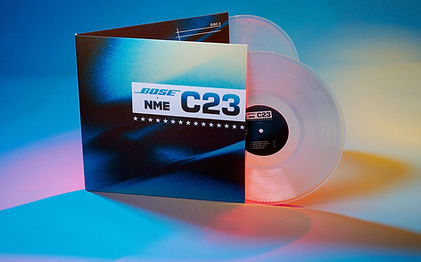

And then, the cherry on the icing on the cake. In 2024, I took on a first for me: producing a coffee table book. The idea was to showcase every artist from the first year of The Cover – the key art, the written feature, and selects from the shoot. We were on a less-than-sane timeframe, and after some unsatisfactory design tests from our vendor, we decided to design the whole thing in-house. WHAT WERE WE THINKING? It doesn't matter – we did it, and we launched it in time for Christmas, again selling through Dawsons. I worked lockstep with multiple stakeholders every day on the project, from Dawsons' dev team in Singapore (where NME's parent company is headquartered) to NME's Art Director, and I'm certain we delivered something very special. Printed in Italy, it's a luxe product, and a snapshot of not just an unforgettable year in music, but also of a weekly collaboration that, warts and all, produced quality cultural touchpoints that will outlive us all.
The C-SERIES. Probably the most rewarding project I led at NME, and probably the most challenging I've ever undertaken. Short version: we had to come up with a new concept for a seven-figure partnership with Bose, or we were going to lose the business. That, it turns out, was the easy bit. Their objective was to be at the heart of an exclusive and authentic music experience, so we pulled together an idea to bring back an NME icon – the C-Series mixtape. C86 was perhaps the most famous iteration, featuring tracks by Primal Scream and The Pastels. My pitch to Bose was Bose x NME C23: a 15-track mixtape of exclusive tracks from emerging artists, released on digital, limited-edition vinyl and cassette (a nod back to the original). We'd support it with an extensive mix of unmissable content: a bespoke Bose x NME C23 magazine and video series featuring talent from the mixtape.
The client at Bose, who is one of the smartest and nicest people I've worked with, instantly bought into it. So then we had to make it work. I won't go into exhaustive detail, but it turned out to be quite hard. Thankfully, the gods of new music blessed us not just with an understanding and visionary client but with a fantastic team who stepped up to deliver in a way I didn't think possible. Between lawyers, labels, publishers, A&R, our heroic PM, editors, staffers, art director, and my boss (who was meant to be on mat leave), the project started to feel real. Things got even more interesting one evening when I took a call from the client while swooping around Waitrose like a yellow-sticker vulture, and he told me it was time to plus up the partnership by throwing a C23 show at SXSW. One white-knuckle trolley ride later, and SXSW was a go.
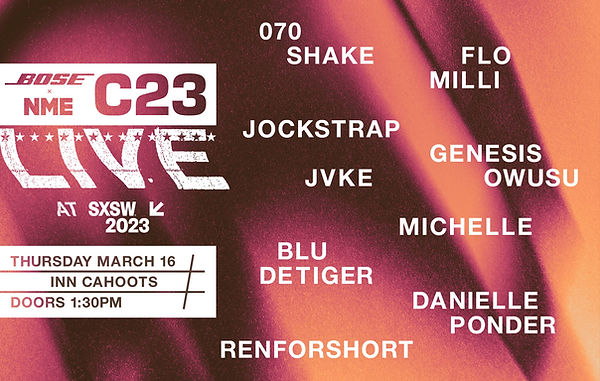
The next thing I knew, it was November, and while we had plenty of live conversations, we weren't where we needed to be in terms of locked-in talent ahead of our March launch. I vividly remember having my first-ever anxiety attack in a meeting with Bose at the top of the Chrysler Building in New York – more to do with being in a small meeting room at the top of a skyscraper with closed blinds than the stress of the meeting itself. I needn't have worried, as Team C23 pulled together (our Commissioning Editor, New Music Editor, A&R, and PM working all hours and I'm assuming using dark magic), and the tracks filtered in. Contracts were signed, branding was signed off, and before long, I was watching the show at SXSW in a suede jacket I bought at Heathrow because I like buying things and airports are boring. The show itself was shaping up to be the best at SXSW, no question. I remember watching Genesis Owusu perform, thinking, HOLY SHIT WE DID IT. And just as I was drifting off into visions of awards and industry acclaim and wondering whether I could pull off wearing cowboy boots down Surbiton High Street, my contact at SXSW appeared at my shoulder and said, "There's an electric storm rolling in; we need to shut down the show."
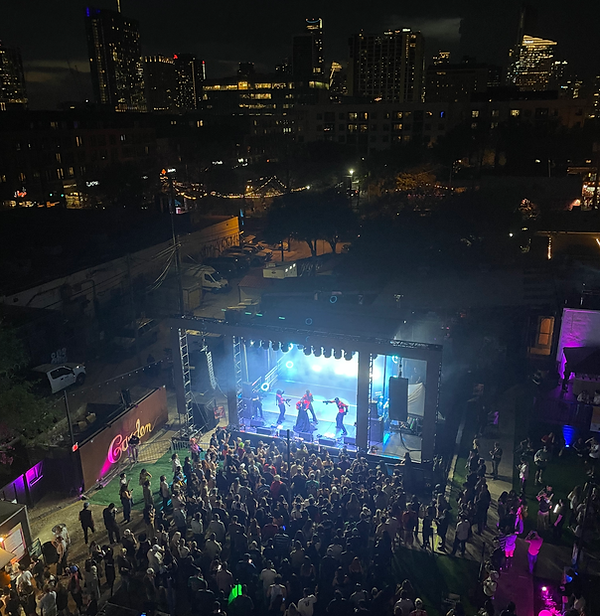
Can you imagine? I don't have to – because it happened. And shut down the show we did. The saving grace: we were the only outdoor show to start back up after the storm dissipated, with astounding performances from Jockstrap and 070 Shake to round out the night. Could we have done the show in a venue with a roof? Yes. But we took the risk, and it didn't quite pay off. I'm sure there's a lesson there somewhere, but I refuse to learn it.
All in all, the partnership was a huge success, and Bose came back the following year for C24. The premise was the same, but evolved: fewer, bigger artists and a stronger focus on video. We came up with a brand new video series to answer that brief – On Tape. The idea was to film an interview and performance of the track in an unexpected location that meant something to the talent. For Laufey, we shot at the Bishopsgate Institute Library, which was brimming with character (her album was inspired by literature). Next, we shot Teddy Swims in a tattoo parlour on Denmark Street. If you've seen Teddy Swims, you don't need me to explain why. The man looks like he upset a giant squid (in a cool way).
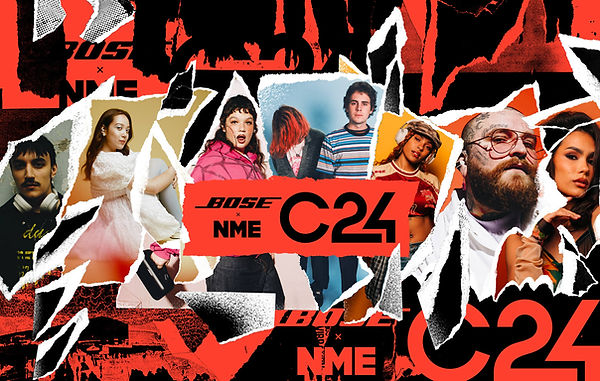
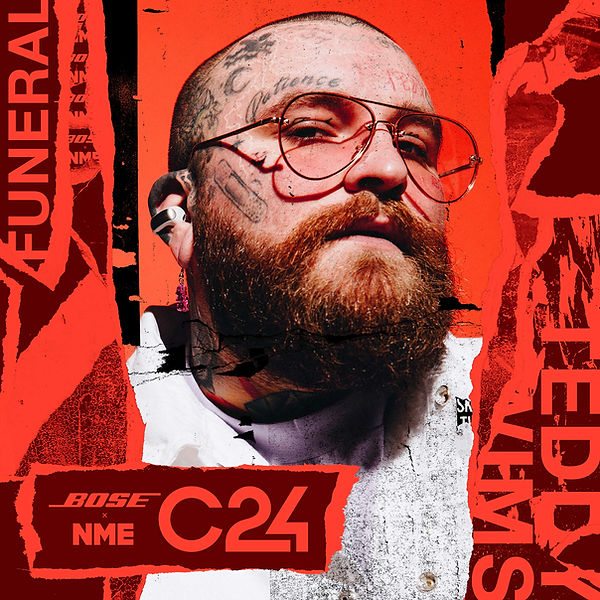
On the shoot, I was not-so secretly hoping he'd kick off the performance by getting a tattoo there and then. I mentioned to his (very nice) manager, who laughed it off with a polite no. But Teddy, being Teddy, had other plans. In a (slightly faked) continuous shot, Teddy got a real face tattoo, then walked to the mic and sang his C24 track, Funeral. A raw and powerful performance – his talent is unquestionable, and he's also just a very humble, nice guy. Finally, we shot Artemas at Four Quarters in glamorous Peckham, a video game-themed bar he used to hang out in when he first moved to London from Oxford.
We had evolved from C23 to deliver something with more resonance and value for music fans, talent, and Bose. Just before I left NME Networks for my career break, Bose signed off on C25. I'm so pleased that the C-Series will continue, and I look forward to listening to the amazing new artists that the project gives a global platform to.
